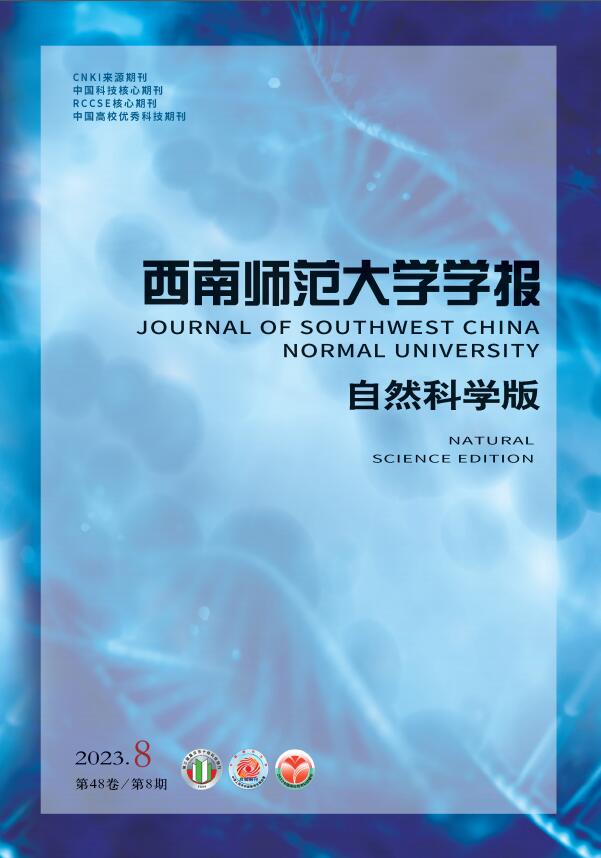-
文献[1-7]研究了吸引子的存在性以及吸引子的后向紧性并建立了相对完善的理论体系. 文献[8-10]研究了二阶格点方程的吸引子的存在性. 文献[11]以及文献[12]研究了带有非线性噪音的弱吸引子的存在性. 本文将在文献[11]的基础上,研究带有乘法噪音的非自治随机波动格点方程的后向紧吸引子的存在性.
HTML
-
本文将在
$ \ell $ 2空间上讨论带有乘法噪音的非自治随机波动格点方程:其中:
$ \mathbb{Z}$ 代表整数集;λ,α为大于0的常数;W(·,ω)是定义在度量动力系统(Ω,$ \mathscr{F}$ ,P,{θt}t∈$ \mathbb{R}$ )上的双边实值Wiener过程,Ω={ω∈C($ \mathbb{R}$ ,$ \mathbb{R}$ ):ω(0)=0},$ \mathscr{F}$ =$ \mathfrak{B}$ (Ω),P是(Ω,$ \mathscr{F}$ )上的Wiener测度,{θt}t∈$ \mathbb{R}$ 定义为:θtω(·)=ω(·+t)-ω(t),(ω,t)∈Ω×$ \mathbb{R}$ ;°表示Stratonovich积分意义下的乘法噪声;$ \dot{u}_i=\frac{\mathrm{d} u}{\mathrm{~d} t}$ ,fi,hi∈C1($ \mathbb{R}$ ,$ \mathbb{R}$ ). 对于h=(hi)i∈$ \mathbb{Z}$ ,f=(fi)i∈$ \mathbb{Z}$ ,g=(gi)i∈$ \mathbb{Z}$ ,αj,ηj>0(j=1,2,3),有如下假设:(A1)
(A2)
$ F(s)=\int_0^s f(r) \mathrm{d} r$ ,且fi满足:(A3) g∈Lloc2(
$ \mathbb{R}$ ,$ \ell $ 2)且满足:定义
$ \ell $ 2上的有界算子:则有
对
$ \delta=\frac{\alpha_1 \lambda}{4 \lambda+\alpha_2^2} \geqslant 0, 0 \leqslant \xi<\frac{1}{\delta}$ ,φ=(u,v)T,定义$ \ell $ 2上的内积(·,·),(·,·)λ和范数‖·‖,‖·‖λ:其中u=(ui)i∈
$ \mathbb{Z}$ ,v=(vi)i∈$ \mathbb{Z}$ ,E=$ \ell $ λ2×$ \ell $ 2,易证1-ξδ≥0且范数‖·‖与‖·‖λ等价.对ω∈Ω,t∈
$ \mathbb{R}$ ,令v=$ \dot u$ +δu-αuz(θtω),z(θtω)=$ -\int_{-\infty}^0 \mathrm{e}^r \theta_t \omega(r) \mathrm{d} r$ 是方程dz+zdt=dω(t)的解,且由文献[14]可知:则方程(1)可转化为一阶随机微分方程
由文献[8, 9, 12]可知,f(φ),h(φ)是E→E的映射,且对任意T>0,φ0∈E,方程(9)存在唯一的连续依赖于初值φ0的解φ(t)∈L2(Ω,C([τ,+∞),E)),对φ0∈E,t≥0,τ∈
$ \mathbb{R}$ ,ω∈Ω,定义可以验证Φ是一个非自治的随机动力系统,即满足:
在下文中,设
$ \mathfrak{D}$ 是X中所有后向缓增集构成的集族. 集合$ \mathscr{D}$ ∈$ \mathfrak{D}$ 当且仅当可以证明
$ \mathfrak{D}$ 是包含封闭的,即若$ \mathscr{A}$ ⊂$ \tilde{\mathscr{A}}$ 且$ \tilde{\mathscr{A}}$ ∈$ \mathfrak{D}$ ,有$ \mathscr{A}$ ∈$ \mathfrak{D}$ 成立.
-
引理1 若假设(A1),(A2),(A3)成立,则对任意后向缓增集
$ \mathscr{D}$ ∈$ \mathfrak{D}$ ,任意的τ∈$ \mathbb{R}$ ,ω∈Ω,存在T=T($ \mathscr{D}$ ,τ,ω)≥1,使得当φs-t∈$ \mathscr{D}$ (s-t,θ-tω)时,有其中
证 方程(9)可以等价地写为
其中
对任意固定的τ∈
$ \mathbb{R}$ ,ω∈Ω,φs-t∈$ \mathscr{D}$ (s-t,θ-tω),令$u=\frac{\alpha_1 \lambda}{\sqrt{4 \lambda+\alpha_2^2}\left(\alpha_2+\sqrt{4 \lambda+\alpha_2^2}\right)}, \hat{\lambda}= $ $ \max \left\{1, \frac{1}{\lambda}\right\}$ ,μ=min{2υ,δη1,γ},方程(12)与φ(r)=φ(r,s-t,θ-sω,φs-t)(其中s≤τ)做内积(·,·)E得到由文献[9]的方法,令
$ \alpha<\frac{\sqrt{\pi} \mu}{2\left(3+2 \delta+4 \xi+2 \alpha_2+2 \eta_3\right)\left(2 \frac{\eta_1 \eta_3}{\eta_2}+\hat{\lambda}\right)(2+\sqrt{\pi})}<1$ 利用Hölder不等式及Young不等式,可证又令
将(17)-(19)式代入(16)式可得
对(20)式利用Gronwall不等式,计算可得
由(2),(3)式易证f(0)=0,‖f(u)‖≤maxs∈[-‖u‖,‖u‖]|f′(s)|‖u‖,则有
对(21)式关于s∈(-∞,τ]取上确界,结合(10)式可知,存在T(
$ \mathscr{D}$ ,s,ω)≥1使得当t≥T时,有因此(11)式得证,即
推论1 若假设(A1),(A2),(A3)成立,由引理1,方程(9)生成的非自治随机动力系统满足文献[3],[13]中拉回后向一致吸收集存在的条件,即协循环{Φ(t)}t≥0存在
$ \mathfrak{D}$ -拉回后向一致吸收集$ \mathscr{K}$ ∈$ \mathfrak{D}$ ,其中引理2 若假设(A1),(A2),(A3)成立,则对∀ε>0,(τ,ω,
$ \mathscr{D}$ )∈($ \mathbb{R}$ ×Ω×$ \mathfrak{D}$ ),φs-t∈$ \mathscr{D}$ (s-t,θ-tω),存在T(ε,τ,ω,$ \mathscr{D}$ )>0,k(ε,τ,ω,$ \mathscr{D}$ )≥1,使得证 构造一个光滑函数ρ(s)∈C1([0,∞),[0, 1]),且当|s|≤1时,ρ=0;当|s|≥2时,ρ=1. 易知,存在常数C0,使得对任意s∈
$ \mathbb{R}$ ,有|ρ′(s)|≤C0. 令$ \widetilde{ \boldsymbol{\varphi }}={{(\tilde{u}, \tilde{v})}^{\text{T}}}=\left( {{(\tilde{u})}_{i}}, {{(\tilde{v})}_{i}} \right)_{i\in \mathbb{Z}}^{\text{T}}$ ,其中$(\tilde{u})_i= $ $ \rho\left(\frac{|i|}{k}\right) u_i, (\tilde{v})_i=\rho\left(\frac{|i|}{k}\right) v_i, \tilde{\boldsymbol{\varphi}}(r)$ 与(12)式做内积(·,·)E得易证
则有
其中C1,C2为常数,将(29)-(31)式代入(28)式可知,
对(32)式运用Gronwall引理可得
由于φs-t∈
$ \mathscr{D}$ (s-t,θ-tω)(s≤τ),结合(10)式可得由(8)式知,存在C(ω)>0,使
$\mathrm{e}^{\frac{\mu r}{4}}\left|z\left(\theta_{r-s} \omega\right)\right| \leqslant C(\omega) $ ,结合引理1,(A3)和(21)式可知,存在T>0,当t>T时有因此,结合(23)式和(34)-(37)式可得,对任意的ε>0,(τ,ω,
$ \mathscr{D}$ )∈($ \mathbb{R}$ ×Ω×$ \mathfrak{D}$ ),φs-t∈$ \mathscr{D}$ (s-t,θ-tω),存在T(ε,τ,ω,$ \mathscr{D}$ )>0,k(ε,τ,ω,$ \mathscr{D}$ )≥1,使得引理3 若假设(A1),(A2),(A3)成立,则协循环{Φ(t)}t≥0在吸收集
$ \mathscr{K}$ ∈$ \mathfrak{D}$ 上是后向渐近紧的.证 对任意固定的τ∈
$ \mathbb{R}$ ,ω∈Ω,取任意序列τk≤τ,tk→+∞(k→+∞),及任意的φ0∈$ \mathscr{K}$ (τk-tk,θ-tkω). 定义φk=Φ(tk,τk-tk,θ-tkω,φ0,k)=φ(τk,τk-tk,θ-τkω,φ0,k),φ0,k∈$ \mathscr{D}$ (τk-tk,θ-tkω),对∀ε>0,由引理2可知存在kε,Nε,当k≥kε时,有由引理1,φk在E中有界,从而{(φk,i)|i|≤Nε}k在
$ \mathbb{R}$ 2Nε+1中有界,故{(φk,i)|i|≤Nε}k在$ \mathbb{R}$ 2Nε+1中有一个有限的ε-网,结合(38)式可知{φk}在E中有一个有限的2ε-网,从而{φk}在E中是预紧的,即证得协循环{Φ(t)}t≥0在吸收集$ \mathscr{K}$ 上是后向渐近紧的.
-
定义1 一个非自治的随机紧集
$ \mathscr{A}$ ∈$ \mathfrak{D}$ 称为关于非自治协循环Φ的$ \mathfrak{D}$ -随机吸引子,若(i)
$ \mathscr{A}$ 是不变的,即Φ(t,τ,ω)$ \mathscr{A}$ (τ,ω)=$ \mathscr{A}$ (t+τ,θtω),t>0;(ii)
$ \mathscr{A}$ 在hausdorff半距离意义下是吸收的,即对任意$ \mathscr{D}$ ∈$ \mathfrak{D}$ ,定义2 集合
$ \mathscr{A}$ ={$ \mathscr{A}$ (τ,ω)}称为后向紧的当$ \mathscr{A}$ 是紧的且∪s≤τ$ \mathscr{A}$ (s,ω)(τ∈$ \mathbb{R}$ ,ω∈Ω)是预紧的.定理1 若假设(A1),(A2),(A3)成立,则方程(1)生成的动力系统存在后向紧随机吸引子.
证 由文献[13](定理3.9)可知方程(9)生成的非自治随机动力系统Φ(t)存在唯一的后向紧
$ \mathfrak{D}$ -拉回吸引子$ \mathscr{A}$ ∈$ \mathfrak{D}$ 和唯一的可测$ \mathfrak{D}$ 0-拉回吸引子$ \mathscr{A}$ 0∈$ \mathfrak{D}$ 0. 再由文献[13](定理6.1)知$ \mathscr{A}$ =$ \mathscr{A}$ 0,故吸引子$ \mathscr{A}$ 也是随机的,即Φ(t)存在唯一的后向紧$ \mathfrak{D}$ -拉回随机吸引子$ \mathscr{A}∈\mathscr{D}$ . 由文献[6, 15]可知方程(1)与方程(9)生成的随机动力系统共轭,从而方程(1)存在后向紧随机吸引子.






 DownLoad:
DownLoad: